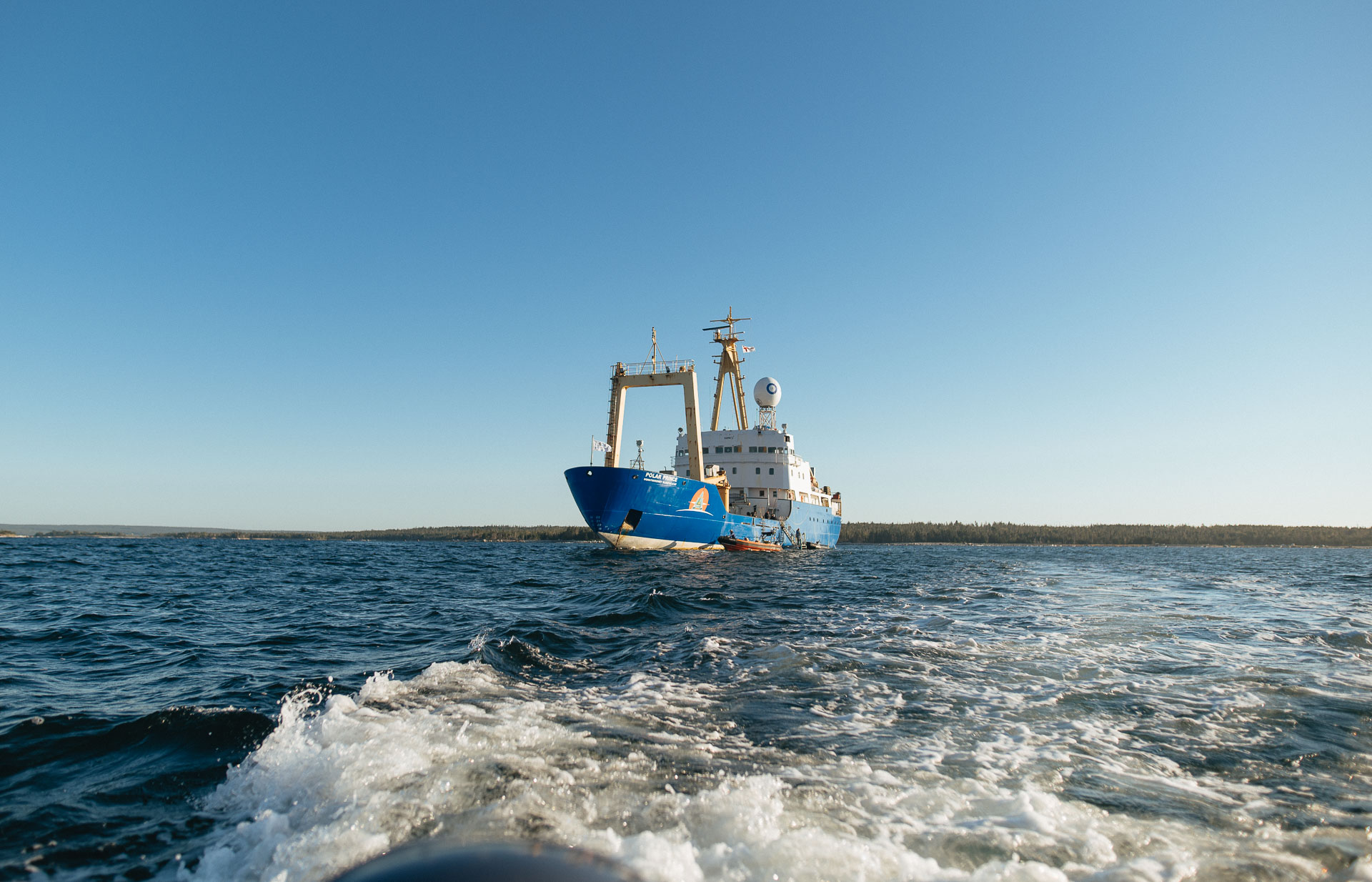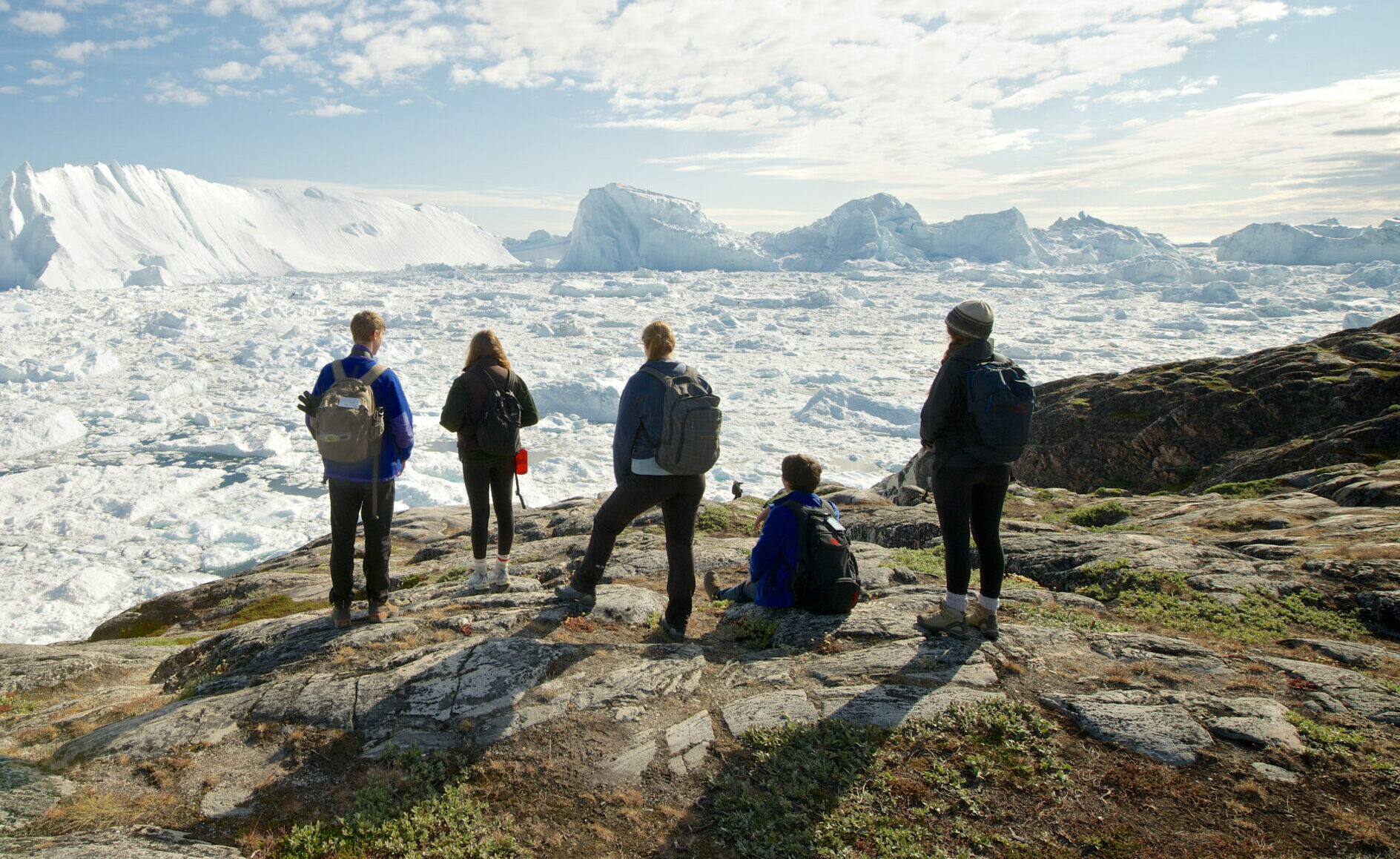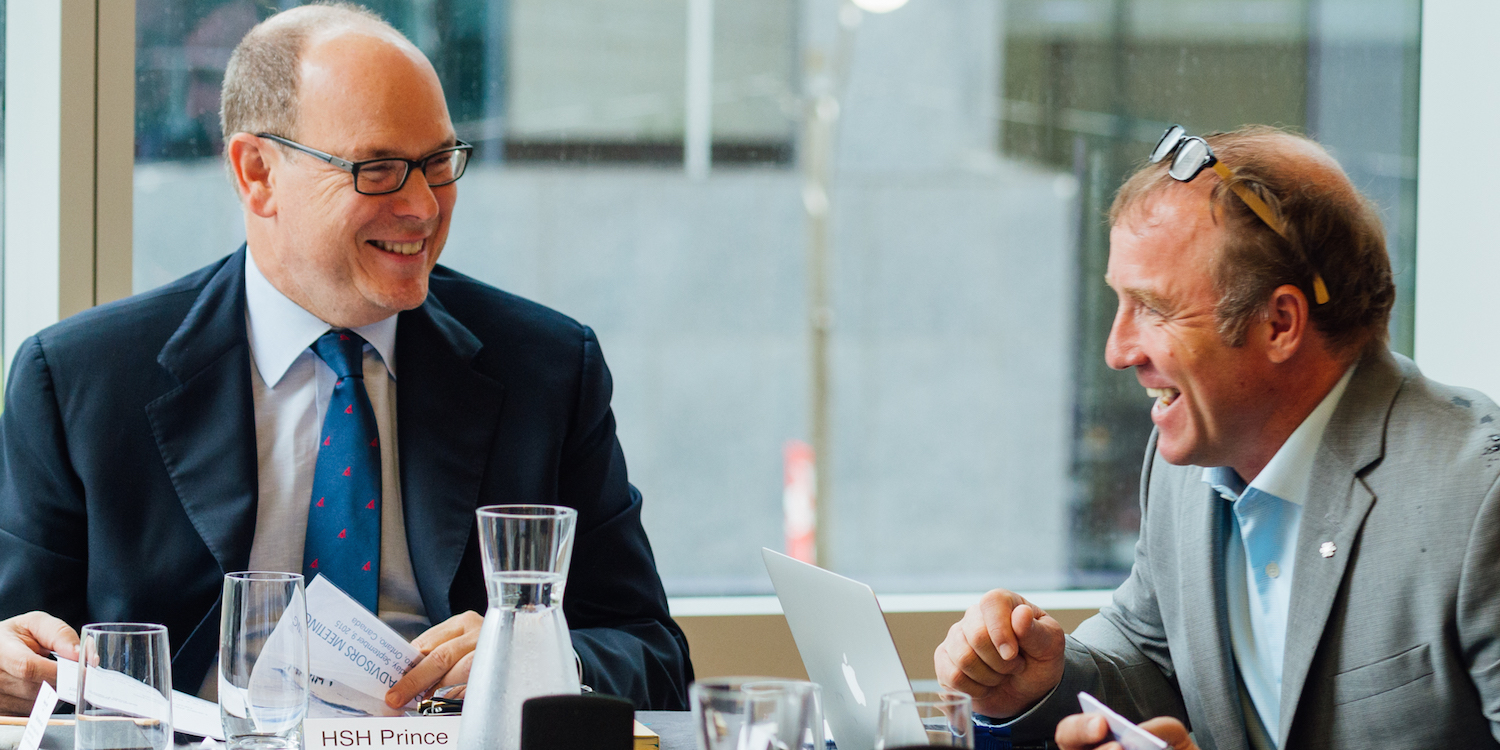Ocean Conservation Expedition: September 13-14
As the expedition continued we spent an incredible two days in Passamaquoddy Bay and St. Andrews-By-The-Sea, New Brunswick.
We first arrived in picturesque St. Andrews to welcome new participants aboard and say goodbye to others. Before departing the ship by Zodiac, Boris Worm from Dalhousie University gave us some context on how incredible this region is. He explained how the Passamaquoddy people settled here for the beautiful deep inlets and productive ecosystems.
Once we landed, we visited Alanna Baird’s nearby art studio. Alanna was kind enough to share more about her artwork and process with us, and even lent a crown that she drew with a 3D pen to Jessie. Now crowned as the Polar Princess, she reigns over the Bridge, watching for birds and steering the ship.

After an inspiring visit to Alanna’s studio, the St. Andrews Biological Station (SABS) welcomed us for a tour of their facilities. SABS is the oldest biological station in Canada, their collaborative research on marine conservation, climate change, and ocean health is key for bringing together institutions and communities around the maritime region. We saw some incredible specimens in their collection, including a whale fetus.
In the afternoon, Expedition Leader Geoff Green hosted Minister of Fisheries, Oceans and the Canadian Coast Guard, Joyce Murray, and Minister of the Environment and Climate Change, Steven Guilbeault, on board the Polar Prince for a tour of the ship. Joining them were MPs Yasir Naqvi, Adam Van Koeverden, and Seamus O’Regan. We also welcomed five youth from Wolastoquey First Nation, two trainers from ECO Canada’s BEAHR training programs, and Ken Paul, Lead Fisheries Negotiator and Fisheries, Research Coordinator. We were all super excited to add these new members to our expedition team!

A lot of people in my community have never had this experience on a ship. I’m glad these youth have taken a chance […] I’m hoping we can have more young people consider ocean careers […] We have good fisheries and it is a good job and important to support communities, but there are all these other ocean careers that our young people don’t really know exist. – Ken Paul, Lead Fisheries Negotiator and Fisheries, Research Coordinator
The next morning after a hearty breakfast, “Team Lobster” hopped into the zodiacs to check on the lobster traps they had set the day before. One member of the research team, Brontë Thomas, a fisheries technician working for the Peskotomuhkati Nation, is conducting a study to quantify microplastics in Atlantic lobsters. Also engaged in this research project are a group of young scientists from the Peskotomuhkati Nation, DFO, and ACAP Saint John. They’ve been heading out each day to drop and retrieve lobster traps with the help of the youth on board, showcasing how unique a job in the sustainable blue economy can be.
Back in the ship’s lab the freshly caught lobster were identified and measured. Mike, one of the ship’s crew members was experienced in identifying the sex of the crustaceans, quickly proclaiming, “a lot of males” and informed us that “A three-pound male lobster can take off a beer bottle cap with its claws!” After that, we all took extra precautions with our fingers and “handcuffed” the lobsters by applying rubber bands to their claws. Now we could safely identify the females by their “feathery” stomachs, as opposed to the more rigid stomachs of the males. Our research team took notes on the sex, measured the carapace (in mm) and processed the lobsters. Finally, the specimens were placed in Ziploc bags and stored in the freezer. The lobsters collected will play a critical role in the study of microplastics in our oceans.

That afternoon we set sail to our next destination, the West Isles and Long Eddy Point. As we made our way across the Atlantic we gathered in the hangar for some introductions and discussions. Ken Paul, the Lead Fisheries Negotiator and Research Coordinator for Wolastoqey First Nation discussed the history of the Wolastoqey Nation, the importance of biodiversity in this area, and how significant the opportunity to learn and share first-hand knowledge is for the youth on board. We also shared some highlights of the day including Trevor, one of our Zodiac drivers from James Bay, who informed us that today was the first time had seen a seal. The Bird Team bragged that they spotted a Sabine’s gull, which normally migrate from the coast of Africa to Chile. Shianne and Loretta shared the beautiful artwork that they created earlier in the day.
Before the sun set, we launched some more lobster traps and confirmed that our drifters were receiving data, then we kept up the SOI tradition of a cold dip in the ocean by diving from the ship into the Bay of Fundy.
Our expedition experience so far was summed up by Shayelin as they leapt from the deck, “I can do anything!”

View our expedition page here.
View the photo gallery from this portion of the expedition here.





